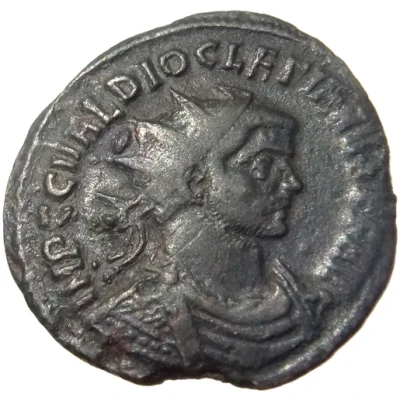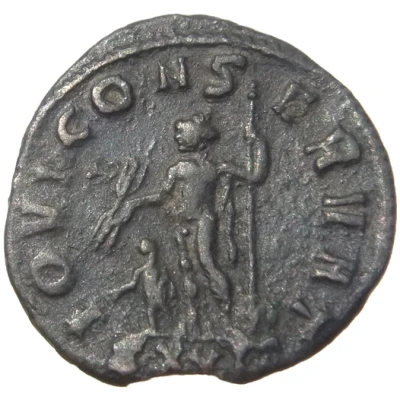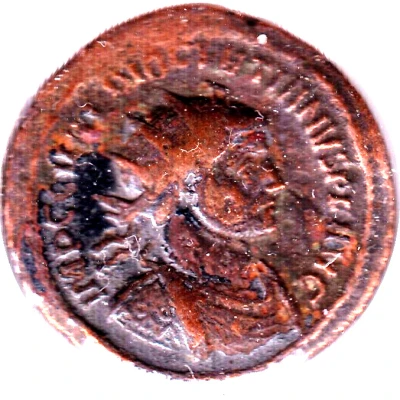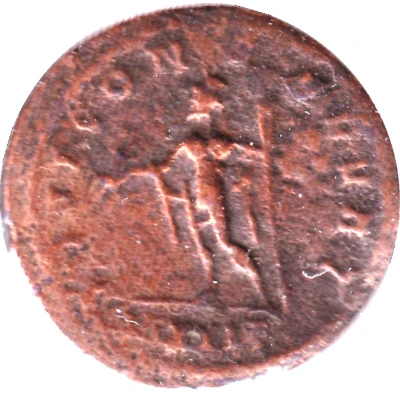


© Quiquengrogne
Antoninianus - Diocletianus IOVI CONSERVAT; eagle; Ticinum
285 year| Billon (.0476 silver) | 3.36 g | 22 mm |
| Issuer | Rome › Roman Empire (27 BC - 395 AD) |
|---|---|
| Emperor | Diocletian (Gaius Aurelius Valerius Diocletianus) (284-305) Maximian Herculius (Marcus Aurelius Valerius Maximianus) (286-305) |
| Type | Standard circulation coin |
| Year | 285 |
| Value | Antoninianus (1) |
| Currency | Antoninianus, Reform of Caracalla (AD 215 – 301) |
| Composition | Billon (.0476 silver) |
| Weight | 3.36 g |
| Diameter | 22 mm |
| Thickness | 1 mm |
| Shape | Round (irregular) |
| Technique | Hammered |
| Orientation | Medal alignment ↑↑ |
| Demonetized | Yes |
| Updated | 2024-10-05 |
| Numista | N#119505 |
|---|---|
| Rarity index | 92% |
Reverse
Jupiter, standing left, holding thunderbolt in right hand and sceptre in left hand; at foot, eagle; mark of value in exergue flanked by mintmark.
Script: Latin
Lettering:
IOVI CONSERVAT
XXI
Translation:
Iovi Conservatori.
To Jupiter the Protector.
Edge
Rough
Comment
This antoninianus matches with the standards of the reform of Aurelianus (274), that is to say that its theoric weight is 1/84 of the libra (= 3,9 g) and that it was struck from billon made of twenty parts of copper per part of silver ; moreover, there is a specific officina letter which is engraved on the reverse to authentify the origin fo its struck. That is the reason why this antoninianus may be called an aurelianus.Interesting fact
One interesting fact about this coin is that it was issued during the reign of Diocletian, who was one of the most influential Roman emperors and known for his economic and military reforms. The coin's design, featuring an eagle and the phrase "IOVI CONSERVAT," suggests that it was minted to honor the god Jupiter, who was considered the protector of the Roman state. Additionally, the use of billon, a silver-copper alloy, was a common practice during this time period, as it was more durable than pure silver and helped to stretch the empire's resources.

